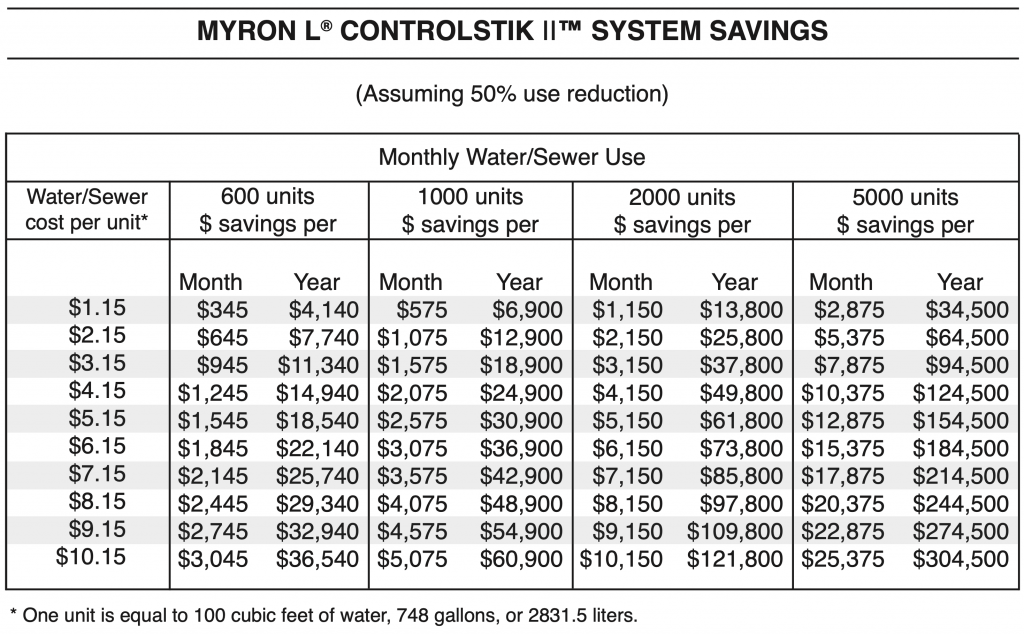
Close

Proper rinsing is one of the most important steps in quality manufacturing or metal finishing. Plenty of low cost, good quality water for rinsing has been available in the past, so rinse water conservation has been largely ignored.
Today, this is no longer true. Tap water costs have increased dramatically. Various new regulations are now in effect which limit the allowable volume of wastewater. Others require wastewater treatment. Still other laws tax the amount of water going down the sewer.
These factors have all encouraged many manufacturers and platers to invest in automatic rinse tank control systems. Many platers using automatic control systems for the first time are pleased to discover a reduction in water usage of up to 80%.
This water use reduction provides two major benefits:
The savings possible with Myron L® automatic Rinse Tank CONTROLSTIK II™ Systems are illustrated in the following table. Figures are based on a 50% water reduction rate; the minimum that can usually be expected. Exact savings depend on several variables, including the type and frequency of work loads, rinse tank size, and type of contaminant.

The second major cost advantage of the CONTROLSTIK II System: Reducing the investment required for waste treatment equipment. Because less water is handled, smaller capacity treatment/recovery systems can be used to meet government water pollution regulations.
Generally, rinse water contamination is caused by chemicals being “dragged in” and salts that are dissolved from work being rinsed. These solutions ionize and can be measured and controlled by Electrical Conductivity (EC). EC measures both the total dissolved solids and the non-solid (e.g.: acid) contaminants, thereby giving the most correct method of control. As water contamination increases, so does the conductivity; the automatic rinse tank controls operate on this principle. When conductivity reaches the value selected as a control point, the water valve turns on to dilute the contamination. When the contaminates are reduced by the dilution, the conductivity falls and the water valve turns off.
The unit of measurement for conductivity is the micromho (microsiemen); Myron L® systems are calibrated to this unit. Myron L® Rinse Tank CONTROLSTIK II Systems can be used in either normal tap water or in Deionized (DI) water tanks. The dual range sensor can be set on either the 5-500 or the 500-5000 micromhos range. The AUTOMATIC RINSE TANK CONTROL is briefly described below. Myron L® CONTROLSTIK II Systems consist of three components: Transformer Box, Controlstik Sensor, and Solenoid Valve.
| Model | Features |
597 |
Reliable solid state electronics in a heavy-duty, IP65/NEMA 4X Corrosion and water resistant transformer box enclosure. Suitable for any plating environment. System includes dual-range Controlstik Sensor and Solenoid Valve with adjustable flow control, manual override, anti-hammer closing, and conduit connector. |
Also available from The Myron L® Company are hand-held Conductivity & pH Instruments for “on-the-spot” water quality testing. The Conductivity and pH sensors are built in for maximum protection. The pH sensor is user replaceable.
900 Series Multi-Parameter Monitor/Controllers for continuous in-line water quality monitoring and/or controlling.
750 Series II Monitor/Controllers for continuous in-line water quality monitoring and/or controlling.
